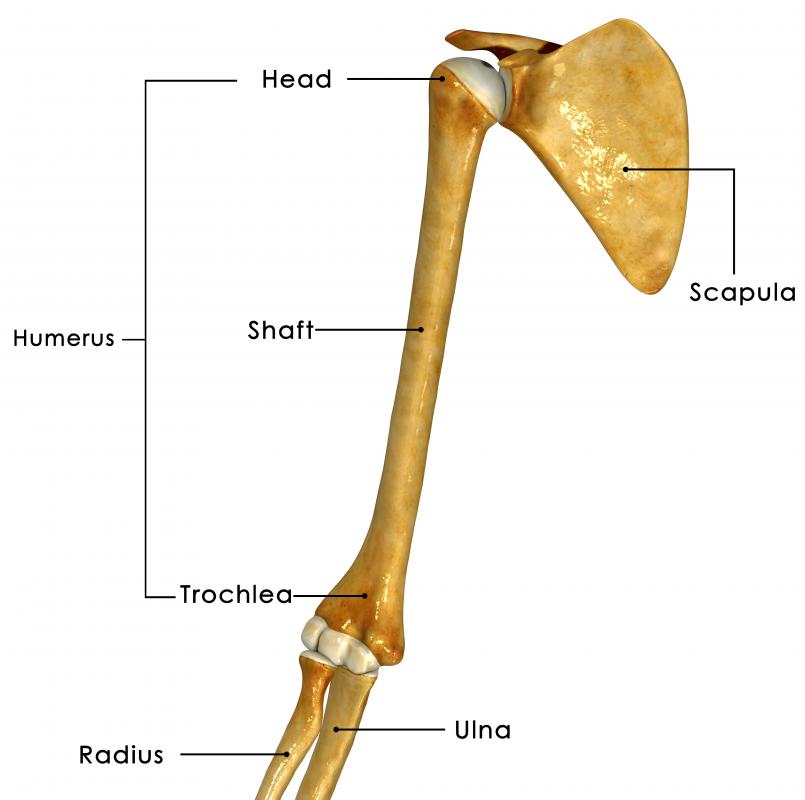At WiseGEEK, we're committed to delivering accurate, trustworthy information. Our expert-authored content is rigorously fact-checked and sourced from credible authorities. Discover how we uphold the highest standards in providing you with reliable knowledge.
What is a Coracoid?
Also known as the coracoid process, the coracoid is a bony protrusion of the scapula, or shoulder blade, that is integral to the structure of the shoulder joint. Its name is derived from the Greek word korax, which means raven, and the coracoid curves forward from the top outside edge of the shoulder blade in a shape that resembles a raven’s hooked beak. Several muscles that move the glenohumeral or shoulder joint and ligaments that stabilize the joint attach to this structure, including the pectoralis minor muscle in the chest, the biceps brachii and coracobrachialis muscles in the arm, and the coracoclavicular, coracoacromial, and coracohumeral ligaments in the shoulder.
Situated next to the shoulder joint, the coracoid lies just in front and to the inside of the joint. It can be felt as a small protrusion where the pectoralis muscle in the chest meets the deltoid muscle in the shoulder, a few inches above the armpit and an inch or so below the clavicle, or collarbone. This process projects forward and sideways from the top of the costal or front surface of the scapula, and while it does not articulate with any other bones, it lends stability to the shoulder joint by the ligaments and tendons of the muscles that affix to it.

Extending downward from the medial border or inside edge of the anterior surface of the coracoid is the tendon of the pectoralis minor. Triangular in shape, this muscle fans out to attach at its lower end to the third through fifth ribs. When contracting, it pulls downward and inward on the scapula, which in turn pulls the shoulder down, a relatively stable position from which to lift the arm away from the body.

Attaching to the lateral or outside surface of the coracoid is the coracobrachialis, a small, thin muscle that crosses the front of the shoulder joint obliquely and inserts along the inside aspect of the humerus in the upper arm. The job of this muscle is to adduct the arm, or pull it inward toward the body, as well as flex it forward at the shoulder joint. Adjacent to the coracobrachialis is the short head of the biceps brachii, the large muscle of the anterior upper arm. Originating via a tendon just above that of the coracobrachialis on the lateral surface of the coracoid, the biceps brachii similarly runs obliquely in front of the shoulder joint. It inserts just beyond the elbow on the top of the radius bone in the forearm, where it acts to rotate the forearm palm-up as well as flex the elbow joint.

Emanating from the top surface of the coracoid are three ligaments integral to holding the shoulder together. The most lateral of these is the coracohumeral ligament, which directs horizontally across the top of the shoulder joint and attaches to the humerus bone, helping to support the joint capsule from above. To the inside of this, projecting upward and outward is the coracoacromial ligament, which links to the other process of the scapula at the shoulder, the acromion process. Stretching upward from the medial aspect of the top of the coracoid is the coracoclavicular ligament, the broadest of the three. It connects to the collarbone and holds it in place relative to the scapula.
AS FEATURED ON:
AS FEATURED ON:














Discuss this Article
Post your comments